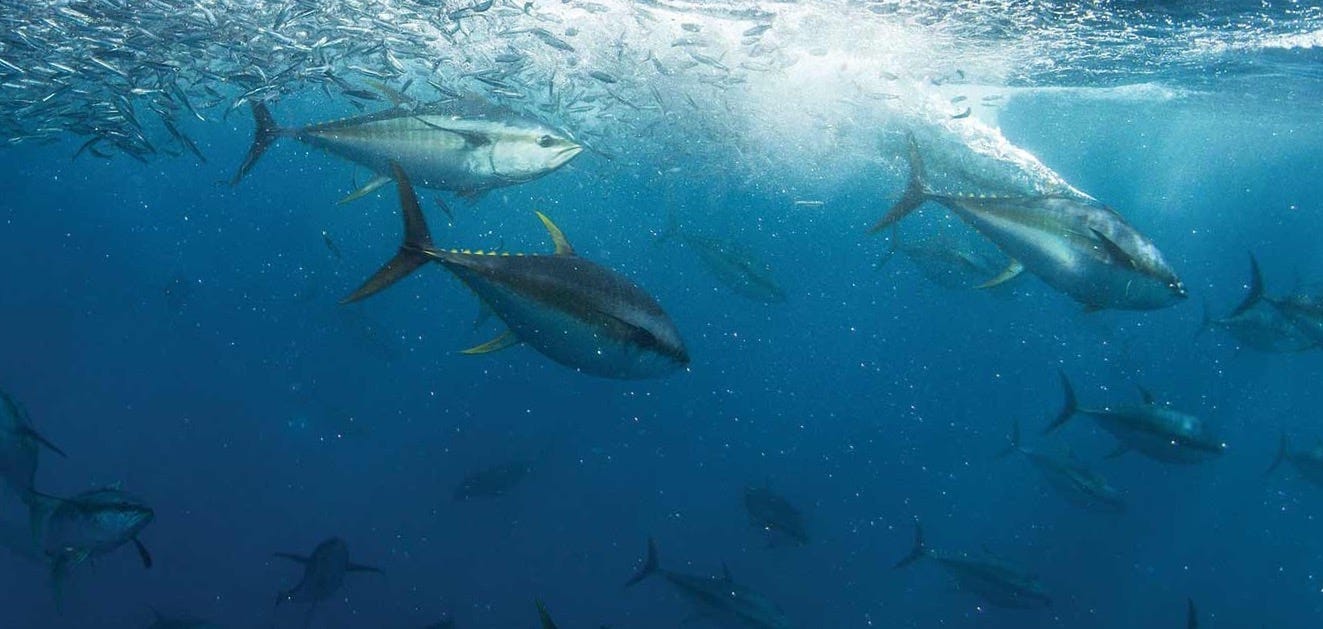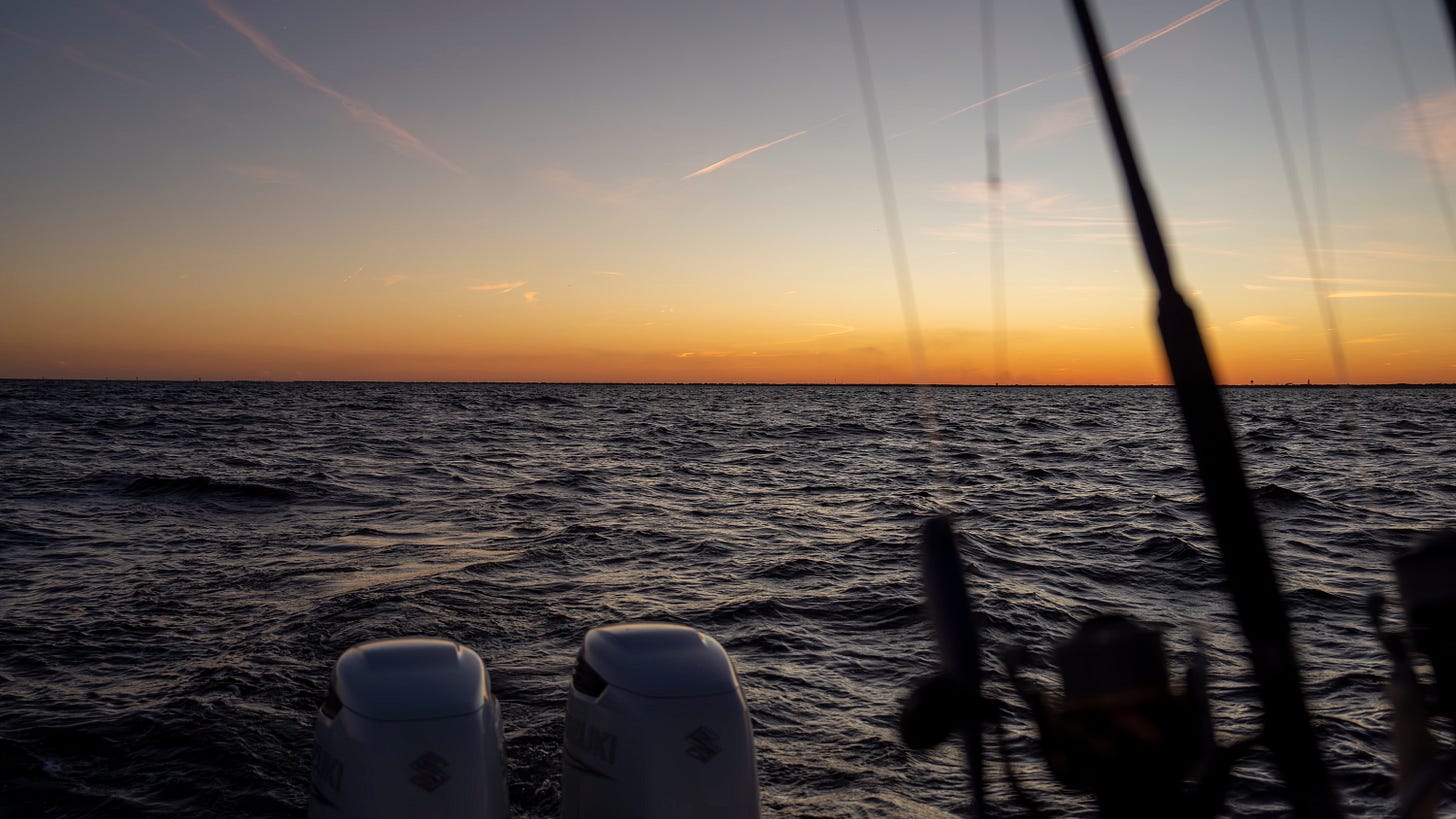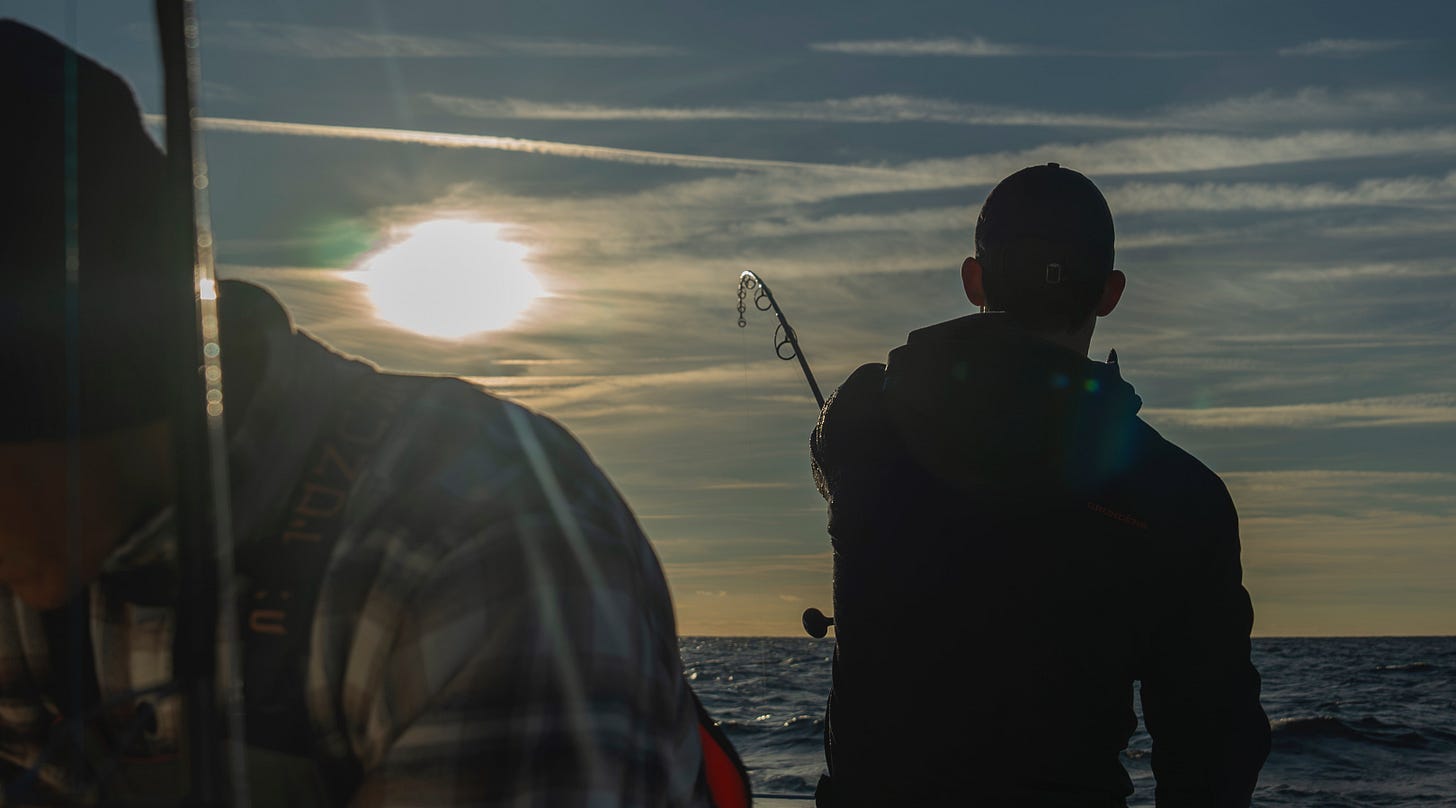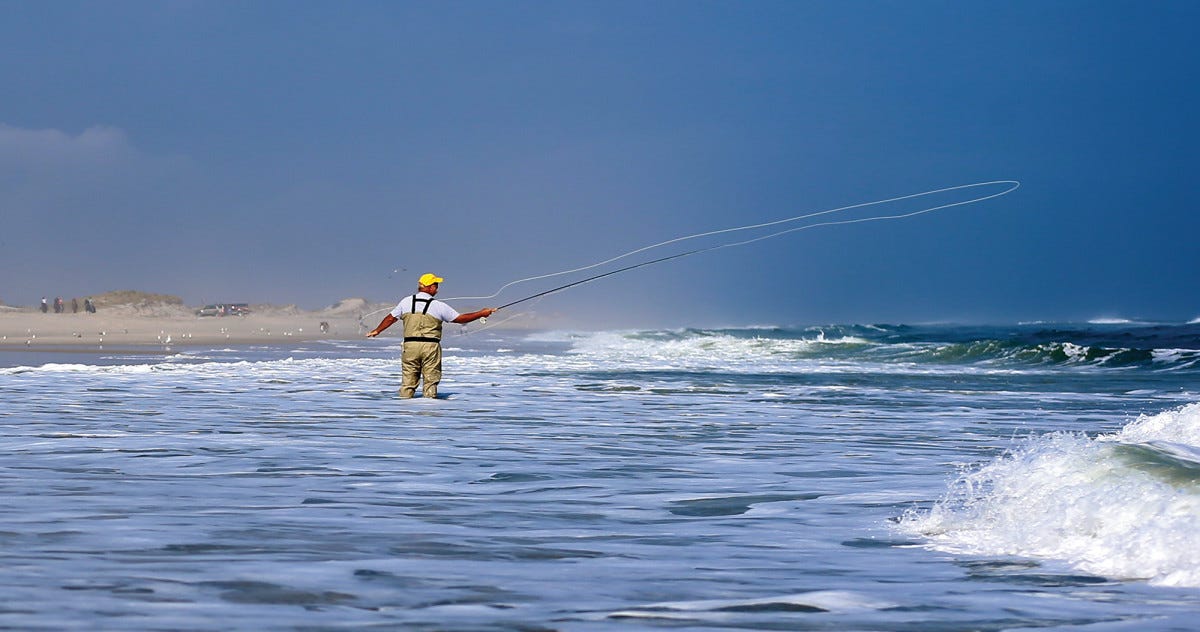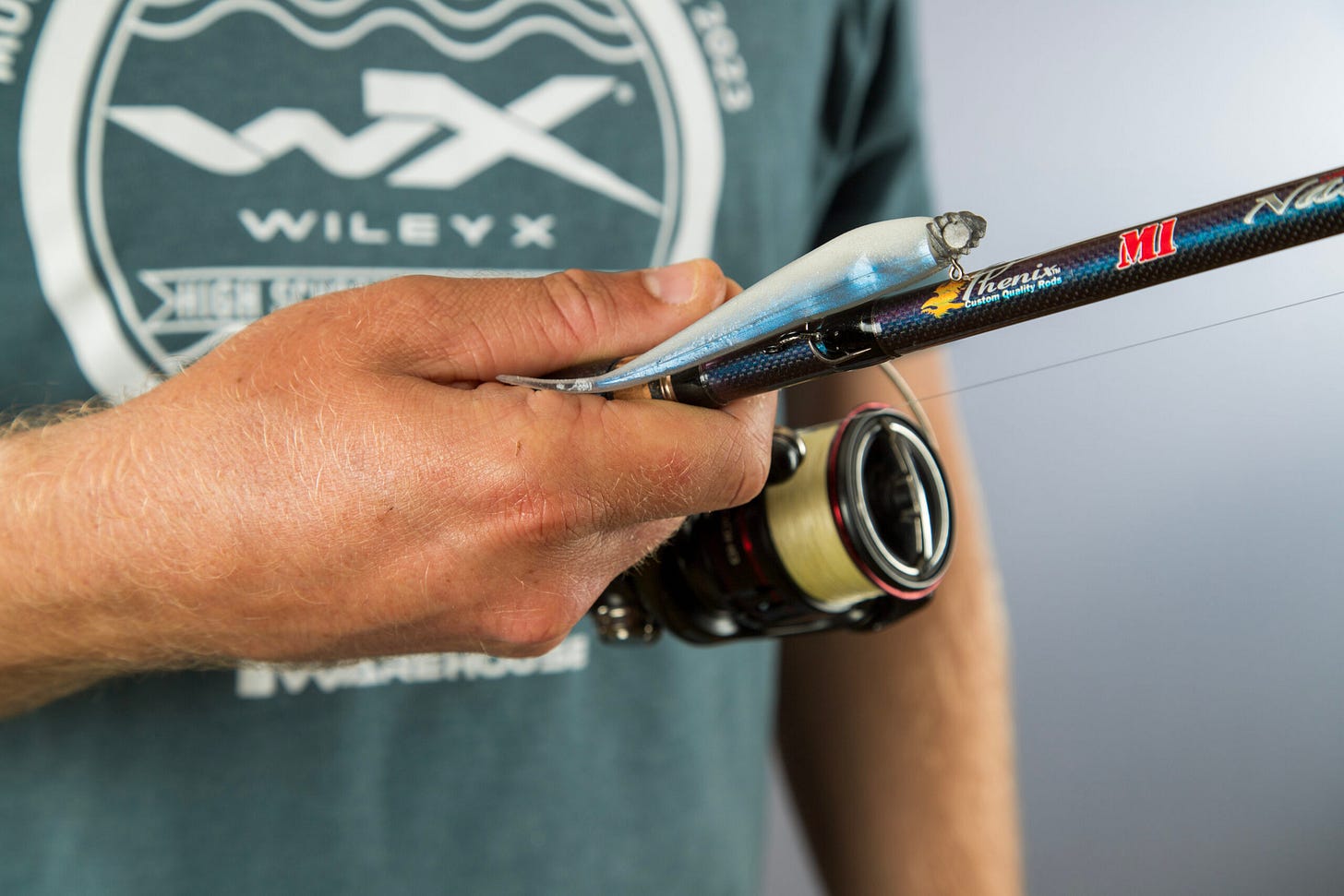The maritime rule of salvage has its origin in Roman law, which dictates that one who preserves or improves upon the misplaced property of another is owed compensation, even if the service was not requested. Let’s get out the internet trawler and get to work…
🎙️| Catch & Retie Pod: Hung Up on a Nervous Wreck —> Joe & Jimmy discuss trophy tog, chug crab whiskey, and make excuses for being emotionally attached to old waders.
🎙️| Backlash Radio: Chris Mowad —> Capt Chris of the “Best Triat” joins the podcast to discuss Omni Sonar, Moon Phases and Billfishing in the Gulf of Mexico.
🎥 | Brooksy: Crystal Water Giants —> Truly utopian conditions on the reef. It also begs the question: are drones becoming a staple of inshore/offshore fish-finding tech? Is the next great leap to synch drone data into your electronics suite and mod them with radar / sonar capabilities? Wouldn’t surprise me to see a major manufacturer (Garmin / Simrad / Humminbird) jump on that idea in the next few years.
🎥 | Tuna Junkies: A Gentleman’s Jig Bite —> Some classic offshore chaos from earlier this Fall to tide you over to the next weather window. Good Yellowfin, Bluefin action and even a rogue Mako in on the slick.
Fishing Reports | OnTheWater - FishermanMag - HullTruth - MAFishReport
Looking for a tackle recommendation? Try GearSay, the first generative AI search tool specifically tailored to helping you find specific gear for a specific purpose. Type in a question or copy & paste text from a fishing report to get instant results.
Twilight of a Tuna Season - Part 1
I was quietly plotting redemption, listening carefully, finger to the pulse of my salt constituency. And at long last, it was time to cash in on good karma. From Manhattan to the beltway of Pennsylvania, where some folks treat a gas station like fine dining, I made my way to the New Jersey tuna grounds. The foggy 3:00am crossing of the Delaware, Wawa coffee in hand, felt like an homage to George Washington’s fabled passage. I wasn’t there to defeat the Hessians at Trenton, but my first incursion into Jersey’s inshore arena was led by a band of revolutionaries.
The night prior, my first stop had been a watering-hole reunion with Jack Burke, photographer and one of few I’d trust to toss my urn into a final feed before I join the great jig in the sky. We met in New Hope, a fitting name for our state of mind, and laid out our weekend blueprint. We’d depart early and convoy east, to join the company of some of the baddest in the game. Known simply as ‘The Junkies’, their reputation as proprietors of East Coast jig n pop needed little introduction. Over the course of the next day’s 14-hour pursuit, amid a conveyor belt of feeds from dark to dark, I would come to appreciate a few core principles that separate these elite ghost-hunters from the pack.
As illusions of choice go, there aren’t many paths to consistently patterning inshore BFT outside of developing a full-bore obsession. Neither can tuna-grade preparations be faked when the difference between failure and triumph could be the fall rate of a 2.5oz vs 3oz soft-plastic, a near-imperceptible line abrasion, or last-second rudder adjustment when approaching nervous water. A decade of trial and error can certainly sharpen the instincts, but only a borderline-spiritual belief in the pattern can mean the difference between getting your number called and everyone calling to get your ‘numbers’.
The uncommon denominator of the Junkie way is a relentless approach to gearing up, approaching feeds, and fighting fish. While there’s plenty of shit-talk amongst this easy-to-gel-with crew, there are no half-measures on Jim Kuhl’s 31 Cape Horn: the lightest setup on the boat has the drag one half-turn from full, and a leader close to 2x the breaking strength of most charter outfits’ standard issue. The vessel is always in search-mode, both virtually (thanks to Starlink) and in real-time. Multiple jettisoned sandwiches at the sight of breaking fish proved a testament to a lifestyle of adrenaline-based sustenance.
The intercept pattern is always from upwind, the bow quartering to the “juice” at the last second—creating the perfect lanes for multiple anglers and the helmsman to fire off casts into the direction of feed. It’s all about timing, precision, and positioning. And when the rods bend, the singular goal from the moment the fish settles is breaking its will and setting up an early harpoon opportunity. Especially when dealing with shallow-water giants, maximum pressure is the iron rule, as Billy Hayes demonstrates in the photo above, delivered via full drag, an often cupped spool, and aggressive rod angles to keep tuna uncomfortable at all times.
As for the silver bullet that every monster-hunter needs in their quiver, the Junkies almost exclusively rely on variations of the NLBN 8” straight-tail (seen below) when tracking inshore Bluefin. James Kuhl is credited with first-adopter status of the soft-plastic system of Floridian origin, with the ‘hell yeah butter’ and ‘green back’ schemes a solid match for northeast prey species like Loligo squid, Sandeel, and Butterfish. The magic is in the simplicity of the presentation, as the slim-profile and 90-degree line tie allow for an erratically wide dart and rolling action that just can’t be replicated with a plug. Retrieved on a semi-slack line, with the occasional hitch or pop and pause worked in, the 1.5 and 2oz heads will dance along sub-surface, while the 3 and 4oz models can be jigged mid-to-lower column depending on drift speed.
In an era of hyperbole, ‘dark to dark’ isn’t a figure of speech when tracking tuna by an autumnal New Moon, especially when paired with a full-bodied NW wind. As suggested by dynamic optimal foraging theory, a $10-phrase meaning the feed is on when fish can maximize calories per tail-kick, the absence of moonlight makes the transitional periods before sunrise and sunset an absolute witching hour. Bluefin with the twilight ‘zoomies’ have made for some of the most spectacular predatory displays I’ve ever seen in my life, and this trip was no exception to that rule.
Just a few miles from Manasquan Inlet, with a sliver of dying sunlight on our starboard, I felt Jim bring the Suzuki’s to a dull roar, bow pointed at a surface disturbance a quarter-mile away. “There they go again”, he muttered, willing the bathtub-sized Bluefin grenade-ing sandeels to stay activated, as they had earlier that morning. They felt compelled to grant us that last wish, breaking fortuitously towards the boat as we approached, sickle-fins of giants slicing the surface while smaller models belly-breached in pursuit of cigar-sized congers.
Four straight-tail jigs were pitched into the crescendo of the day’s thunnus concerto, though nothing but the sound of heavy breathing was audible within the cockpit…3…2…”ON ME! ON ME!“ Billy gasped, bounding to the starboard bow rail, giving a gratuitous 4th and 5th hookset into his fish heading eastbound and down. And as Jack and I skipped our NLBNs back in to give Jim ample room to pilot, flickers of golden-purple iridescence were all we saw before my bait disappeared in a boat-side detonation. As fate would have it, my hook never found purchase at the extreme angle, but the literal staring contest with 300lbs of big-game was more than the finishing touch on a five-bite day in less than ten fathoms.
Part 2 Coming Next Week…
Rest In Peace: Bob Popovics on all things Fly Fishing (AnglersJournal) – “A lot of anglers owe some of their success to the time Popovics spends in the surf in New Jersey. As we’re driving down the beach at Island Beach State Park, Popovics says it’s imperative to understand baitfish if you want to succeed at fly tying, given that so many saltwater patterns don’t resemble anything even close to a fish, yet are still successful. “For years, I’ve netted mullet, sand eels, bay anchovies, silversides, shrimp, squid, crabs … you name it,” he says. “I observe how they swim and interact with the surf. Making a fly that imitates those actions, colors and movements is what keeps me tying new flies in my mind in the middle of the night. Once I’ve tied them, I get one in the water, retrieve it several times and then keep working on it until it’s exactly what I envisioned.”
“Biggest Blitz Ever” Recorded in Norway (OnTheWater) – “From a recent study using a wide-scale acoustic mapping technique, oceanographers from Norway and MIT recorded “the largest predation event ever observed in the ocean” (their words) a.k.a. “the biggest blitz of all time” (my words). This happened across the ocean from such storied “predation events” as the 2017 Eclipse Week Blitz in the Canal or the 1981 Columbus Day Blitz on Martha’s Vineyard, in the Arctic. There, a school of capelin, a small baitfish in the smelt family, gathered in a school of tens of millions of fish to spawn. That massive biomass of bait attracted a big school of cod (about 2.5 million of them!), and over the course of a few hours, the codfish ate about 50% of the capelin (about 10.5 million!).”
Four Fisheries to Target Big Game This Winter (SaltwaterSportsman) - “It’s not often that offshore structure gets created before our eyes, but that’s exactly what they’ve done in the waters off Florida’s Panhandle. In Destin-Fort Walton Beach, the tourist development council made history when it deployed the first legal fish aggregating devices (FADs) in continental US waters—eight FADs around DeSoto Canyon. Placed in 2020, those FADs have been a big success in many ways. Four FADs were placed on the east side of DeSoto Canyon, and four on the west side. The closest is 60 miles from Destin’s East Pass, and the farthest is 80 miles from the Pass. “We get some of the best fishing of the year at the FADs into January,” says Capt. Adam Peeples of One Shot Charters out of Destin. “We live-bait-troll for yellowfin, and chunking is productive, and we always pick up some rainbow runners for sushi. The FADs have created ecosystems for the fish and for the fishermen.”
Suspended Tactics: Top Jerkbait and Minnow Methods (Wired2Fish) – “Anaya’s approach focuses on pinpointing suspended bass using his Garmin LiveScope. He reaches for the jerkbait when he spots high-riding fish within casing range and the jig and minnow for deeper fish — both excellent wounded shad imitators. The trick is to make precise casts just above the fish and trigger them with the right cadence. A shallow diver proves to be the best jerkbait when targeting the high riders.”
Thanks for reading The Weekly Salvage, until next week!
Have feedback or want to learn more?
Reach out to us on IG @Blowin_We_Goin



